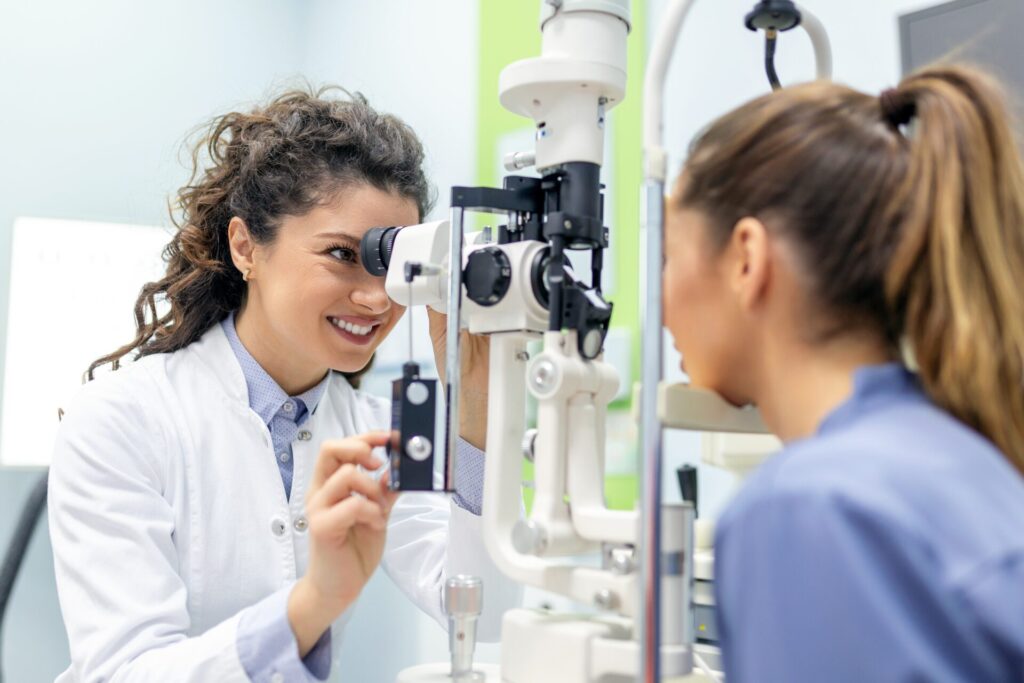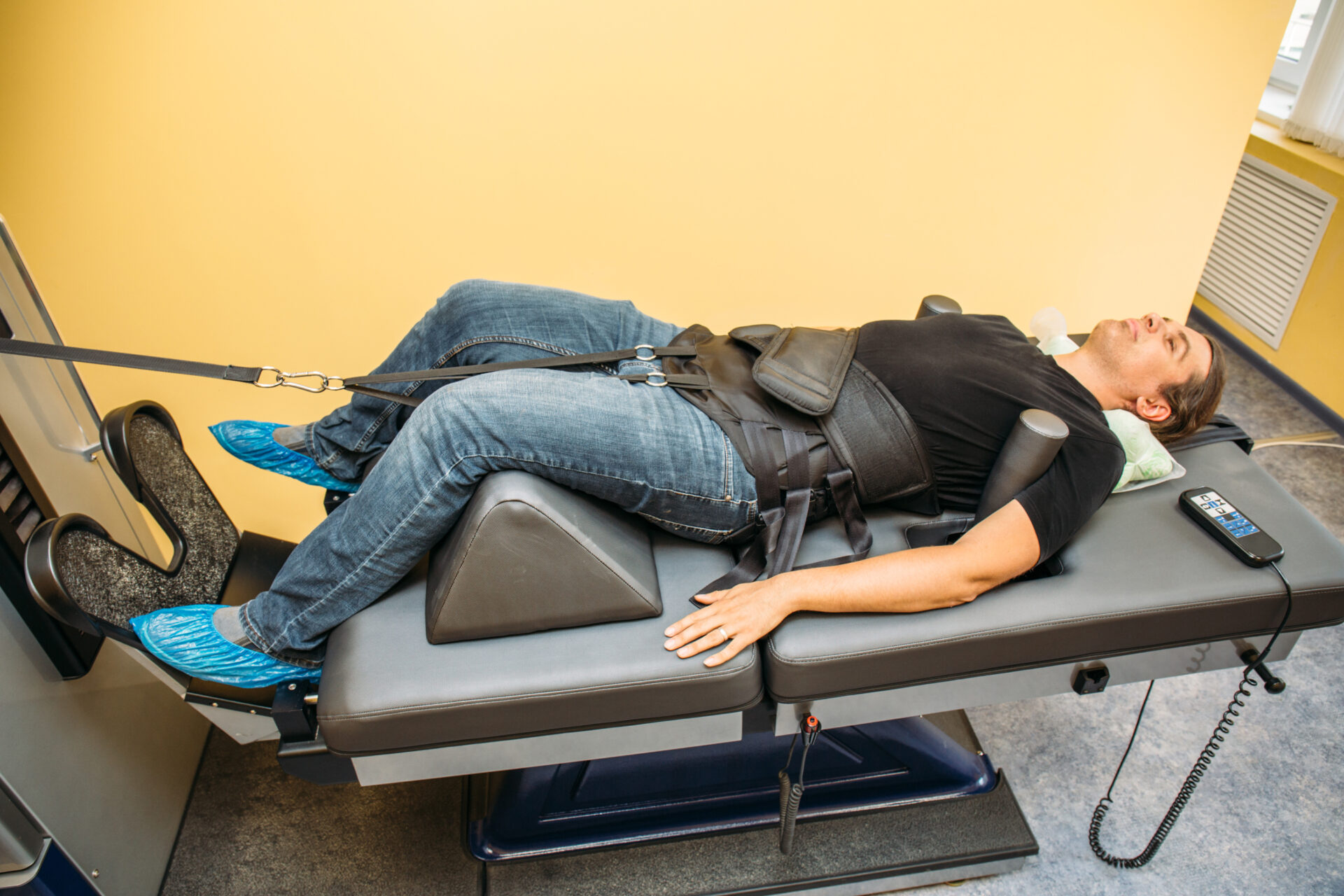This post may contain affiliate links, which means if you enroll through my link, I’ll receive a small commission at no extra cost to you.

The average cost of an eye exam without insurance is between $100 to $200. I will go into the factors that determine the different costs and help you find affordable solutions.
What are the Most Common Reasons for Visiting an Optometrist?
The most common reason for visiting an Optometrist is when people can’t see very well, usually due to needing eyeglasses or they have cataracts. Another common reason for visiting the Optometrist would be pain or irritation in the eye.
Some people have medical conditions or diseases of the eye that require regular follow-ups for monitoring and treatments. For example, people with diabetes are recommended to have an eye exam regularly (at least once a year) to monitor diabetic retinopathy.
Should You Visit an Optometrist or an Ophthalmologist?
When to see an Optometrist
For most people, an Optometrist will be a great fit for their eye care needs. You should visit with an Optometrist if:
- You have healthy eyes and just need eyeglasses or contacts
- You want regular check-ups for your eyes
- You have diabetes but no vision problems or damage to your eyes
- You have mild cataracts and no vision problems
When to see an Ophthalmologist
- If you have a sudden change in vision loss
- If you have a foreign object, like metal, in your eye
- If you have an eye condition or eye disease, such as glaucoma or macular degeneration
What Services are Included in an Eye Exam?
There are three different types of eye exams: routine eye exams, comprehensive eye exams, and contact lens eye exams.
Before any eye exam, write down any symptoms you may have, educate yourself on your family’s medical history, and remember to bring your current glasses or contacts to your appointment. This information will be helpful to your doctor and will help them help you take care of your eye health.
Routine Eye Exam
The main purpose of a routine eye exam is to determine if you need vision correction (eye glasses or contacts), or if your prescription needs to be updated.
A routine eye exam will typically include:
- Visual Acuity test (this is where you read the smallest letters you can read on a standardized chart (Snellen chart) or a card held 20 feet away)
- Any refractive errors in your eyes, such as myopia (nearsightedness), hyperopia (farsightedness), presbyopia (loss of near vision with age), and astigmatism;
- Your pupil’s reaction to light and objects near or far away.
- Sharpness of vision
- Peripheral vision
- Eye movement and alignment.
- Eye pressure.
Comprehensive Eye Exam
This is actually the most common type of eye exam. Comprehensive eye exams are all-inclusive exams that give the doctor the best look at your overall eye health.
A comprehensive eye exam will typically include:
- Everything included in the “Routine Eye Exam”
- Eye alignment
- Muscular function
- Your pupil’s reaction to light and objects near or far away
- A cover test, where one eye is covered so that your eye doctor can evaluate how the eyes work independently of one another.
- A test to check your depth perception.
- An ocular motility test to test the movement of the eyes.
- A slit lamp exam which enables your eye doctor to check the shape of the eyeball and spot any abnormalities.
- Pupil dilation, which enables your eye doctor to look into your eyes to check for the presence of any internal eye diseases.
- Glaucoma testing, which checks the pressure inside your eyes.
Contact Lens Eye Exam
If you want to wear contacts, you will need to get a contact lens exams in addition to a comprehensive eye exam. The doctor will need to do additional tests to make sure your eyes are compatible for contacts.
If you need a contact lens eye exam, the doctor will do extra tests, which are necessary for determining what kind of contacts are right for you.
A contact lens eye exam will include:
- Everything included in the “Comprehensive Eye Exam”
- The curvature of your cornea;
- Corneal topography
- Tear film test
If you are a good candidate for contact lenses, your doctor will provide a contact lens prescription that is the right fit for your eyes and they will also be able to show you how to safely insert and remove your contacts.
Doctors will provide you with a trial pair of contact lenses and have a follow up exam within the first week to make sure you have adjusted to them and that they are a good fit for you.
What affects the cost of an eye exam?
New vs Returning Patient
New patients will spend around $200 to see an Optometrist for the first time. The doctor usually will go over your medical history and discuss any concerns or answer any questions you may have about your eye health.
Returning patients will typically pay less, usually around $100 to $150 per visit.
Geographic Location
In 2023, the average eye exam cost in the United States was:
- Midwest – $81
- Southeast – $94
- Southwest – $102
- Northeast – $105
- West – $122
- Northwest – $128
Source: allaboutvision.com
Type of Practice
In 2023, the average eye exam price was:
- Vision center – $85
- Retail chain – $90
- Standalone practice – $140
Source: allaboutvision.com
How much does an Eye Exam cost without Insurance?

The average cost of an eye exam without insurance is between $100 to $200. You can find retailers that will provide a routine eye exam for as low as $50. If you need a contact lens eye exam, you can find retailers that will cost $89 to $150.
The cost of an eye exam at different Retailers
The prices listed below show the average cost for a routine eye exam or a contact lens eye exam at popular retail locations.
| Retailer | Routine Eye Exam Cost | Contact Lens Eye Exam Cost |
|---|---|---|
| Sam’s Club* | $50 | $100 |
| America’s Best | $50 | $89 |
| Target | $70 | |
| Costco* | $80 | $150 |
| LensCrafters | $73 | |
| Walmart Vision Center | $75 |
Source: VisionCenter.org
Average Cost of an Eye Exam By State
When discussing the cost of eye exams without insurance, there’s more to consider than just base costs. The fees can also vary significantly based on the state where you’d like to take the test. The table below details the average cost (when paying in cash) for an eye exam in different states.
| State | Average Eye Test Cost (Cash) |
| Alabama | $73-108 |
| Alaska | $99-147 |
| Arizona | $82-123 |
| Arkansas | $72-107 |
| California | $90-135 |
| Colorado | $80-118 |
| Connecticut | $87-130 |
| Delaware | $85-126 |
| District of Columbia | $84-125 |
| Florida | $80-119 |
| Georgia | $75-112 |
| Hawaii | $76-113 |
| Idaho | $74-110 |
| Illinois | $84-124 |
| Indiana | $76-113 |
| Iowa | $69-103 |
| Kansas | $72-107 |
| Kentucky | $73-109 |
| Louisiana | $82-121 |
| Maine | $74-110 |
| Maryland | $87-129 |
| Massachusetts | $89-133 |
| Michigan | $82-122 |
| Minnesota | $93-138 |
| Mississippi | $74-110 |
| Missouri | $73-109 |
| Montana | $76-113 |
| Nebraska | $74-111 |
| Nevada | $79-117 |
| New Hampshire | $79-117 |
| New Jersey | $96-142 |
| New Mexico | $73-108 |
| New York | $90-134 |
| North Carolina | $72-107 |
| North Dakota | $80-119 |
| Ohio | $75-112 |
| Oklahoma | $80-119 |
| Oregon | $82-122 |
| Pennsylvania | $85-126 |
| Rhode Island | $90-134 |
| South Carolina | $77-114 |
| South Dakota | $72-107 |
| Tennessee | $72-108 |
| Texas | $78-116 |
| Utah | $81-121 |
| Vermont | $80-119 |
| Virginia | $78-116 |
| Washington | $87-129 |
| West Virginia | $78-116 |
| Wisconsin | $82-122 |
| Wyoming | $80-119 |
Additional Costs at an Eye Exam
Some potential costs can include:
- Contact Lens Eye Exam ($120-$250)
- Prescription Glasses ($240)
- Contacts (Nearsighted: $200-$300 annually & Astigmatism: $500-$700 annually)
- LASIK surgery ($2,200 per eye)
- Cataract surgery ($3,500 – $7,000)
How Much Is an Eye Exam Without Insurance vs. With Insurance?
The other side to the question of how much an eye exam costs is how much it costs with insurance. It’s essential to note that even if you have vision insurance, you will likely still be liable to pay a copay.
The following short table demonstrates the differing prices for eye exams with and without insurance.
| Average Cost of an Eye Exam(Without Insurance) | Average Cost of an Eye Exam(Insurance Copay) |
| $100-$200 | $10-$50 |
How often are eye exams recommended?
Optometrists usually recommend them once per year for adults and children, as it gives them a chance to inspect your eye anatomy and eye health thoroughly. In some instances, certain diagnoses will require more regular follow up to monitor ocular health and treatment.
How to Save Money on an Eye Exam
There are several programs that can help you with accessing discounted or free eye exams.
EyeCare America
EyeCare America provides free eye exams to people ages 65 and older who are at high risk of glaucoma. EyeCare America has more than 4,600 volunteer ophthalmologists that provide eye care to those in need. Ninety percent of the care provided is at no out-of-pocket cost to the patient. You can learn more about how it works and see if you qualify.
InfantSEE®
InfantSEE® is a no-cost public health program developed to provide professional eye care for infants nationwide. You can learn more and find an InfantSee® provider near you.
VSP Vision™ Eyes of Hope®
If you can’t afford the vision care you need, VSP Eyes of Hope gift certificates and mobile clinics may be able to help. Multiple programs are available to assist community members and eye care practices affected by disaster. Learn more about the program and eligibility.
How to Save Money on Eyeglasses
There are several programs that can help you access eyeglasses for you and your family.
New Eyes
New Eyes provides free eyeglasses to both adults and children with low incomes. You can apply online to see if you qualify. According to their website, it’s ideal for a social service agency or health advocate (such as your eye doctor) to apply on your behalf. Apply for New Eyes here.
OneSight’s OnSite Voucher Program
The OneSight’s OnSite Voucher program provides free eyeglasses to people with limited incomes. You’ll need to have a 501(c)(3) nonprofit organization (such as a school, church, Lions Club, Prevent Blindness, Red Cross, or United Way) write a referral letter after they have verified your income and vision needs.
You can then take your referral letter and prescription to any Luxottica Retail Location (LensCrafters, Target Optical or Pearle Vision corporate store) for a free pair of glasses.
Get all the details about OneSight’s OnSite Voucher Program.
Will a Health Share pay for an Eye Exam?
A Health Share is primarily for the large and unexpected medical needs that come up. That means that Health Share members would need to pay for their own eye exams or take advantage of one of the many programs that help with the costs.
If you are interested in learning more about what a Health Share is, check out my “Start Here” page to learn all about how you can save up to 60% on your healthcare costs.
Health shares are not insurance and do not offer insurance coverage. Membership in a health share does not guarantee the payment or reimbursement of medical expenses. Each organization operates under its own membership guidelines, which determine what expenses may be eligible for sharing. This publication is for informational purposes only and is not provided by an insurance company. For state-specific notices and full program details, please visit the respective health share’s official website.





Leave a Reply